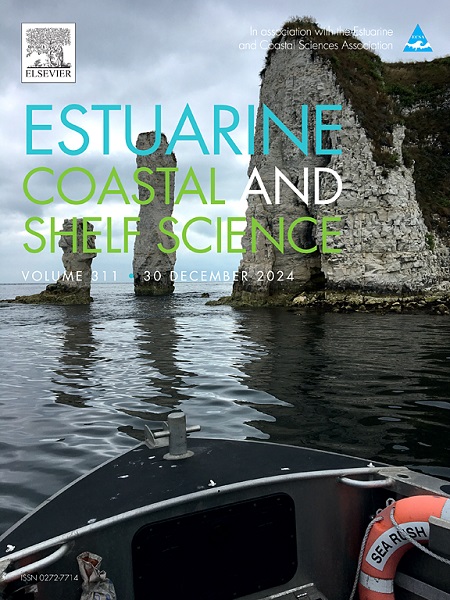Tropicalization induced by non-native species in the western Mediterranean Sea: Effects on decapod crustacean taxocoenoses
IF 2.6
3区 地球科学
Q1 MARINE & FRESHWATER BIOLOGY
引用次数: 0
Abstract
Geographic distributional range shifts are a common effect caused by global warming on marine species, usually leading to polewards displacements of their native distribution. These climate-induced distributional expansions can cause the introduction of warmer alien species in higher latitude areas, which leads to the tropicalization of these areas. In decapod crustaceans, the external body shape has been identified as an essential trait to assess the invasive potential of species given its relevance in their biological and ecological performance. The present study analyses the abundance trends of two tropical anomuran decapods that expanded their distribution and established in the western Mediterranean in recent decades (the squat lobster Iridonida speciosa and the hermit crab Pagurus mbizi) and assess their impacts on the population dynamics of their taxocoenoses along the Iberian Peninsula (western Mediterranean Sea) over 25 years (1994–2018). In addition, external morphology, measured with geometric morphometric methods, was used to characterize the taxocoenoses to evaluate whether it contributes to understanding the invasive ability of allochthonous species. The results showed that the exotic species that achieved dominant levels (I. speciosa) presented some particular morphological differences from native species that likely provide it with greater exploitation efficiency or unoccupied niche opportunities to avoid or overcome competition with residents. However, the invader that settled itself apparently favoured by external or environmental variables but failed to establish dense populations (P. mbizi) was morphologically similar to native species. This overlap probably implies ecological competition for the available resources, thus reducing the probability of becoming abundant within the taxocoenosis. The findings of the model agree with those obtained in other taxonomic groups, which reinforces the hypothesis that external morphology is an additional element to be considered within the complex combination of factors determining the success of marine invasive processes.
求助全文
约1分钟内获得全文
求助全文
来源期刊
CiteScore
5.60
自引率
7.10%
发文量
374
审稿时长
9 months
期刊介绍:
Estuarine, Coastal and Shelf Science is an international multidisciplinary journal devoted to the analysis of saline water phenomena ranging from the outer edge of the continental shelf to the upper limits of the tidal zone. The journal provides a unique forum, unifying the multidisciplinary approaches to the study of the oceanography of estuaries, coastal zones, and continental shelf seas. It features original research papers, review papers and short communications treating such disciplines as zoology, botany, geology, sedimentology, physical oceanography.

 求助内容:
求助内容: 应助结果提醒方式:
应助结果提醒方式:


